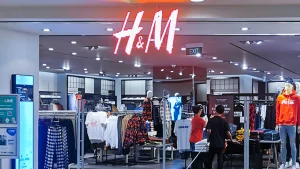
H&M’s Metaverse Clothing Store
Currently, Web3 is compelling enough to demand attention but still daunting enough to stall efforts at brand strategy. Web3 is largely unproven in its marketing and branding capabilities, but it does have the potential to change the way consumers experience brands. Storytelling is the primary link between brand and audience so it is incumbent upon companies to understand how Web3 can be used to ‘storytell’ their brand.
Companies will need to create a story that is engaging and, I believe, focuses on community building. This will require Web3 ‘experiment testing’ with the goal being to evaluate these experiments and evolve a solid marketing/branding strategy.
The Way Forward…the Next Step
Similar to the way companies experimented with social media marketing in Web2, – where blogs first came into use, followed by the drive to build a connection between brand content and target audience, then SEO developed as a tool to connect to specific audiences, Web3 will have its own brand-building requirements.
Web3 is very different from Web2 and any competent brand manager is aware they are at a new inflection point. The problem for brand builders is that Web3 is still evolving which necessitates the following to move forward.
- How do you capture audiences’ attention while experimenting with the evolving technology?
- Exploring the future of connected communities and experiences.
- Formulating a clear picture of success for your brand.
- Evaluate whether to build your own metaverse or buy into an existing one, or both.
- Creating a team that is both business and technology-minded.
Prepare a Web3 Guidebook
What is required to succeed is a forward-thinking, decision-driven plan with prioritized action steps that fill the gap between the brand vision and execution. Your Web3 Guidebook is your brand and marketing vision of how you are going to participate in Web3 with its inherent transparency and community focus. You’ll need to think beyond the current and established constraints. The ultimate challenge is the requirement to devise a unique way of using your metaverse.
 Web3 Will Be User-Driven
Web3 Will Be User-Driven
Great brand managers have an understanding of their customers and potential audiences, but remember in Web3 instead of populating platforms with goods or services – you are now the platform! You control the entire metaverse experience.
The compelling experience for consumers will require very broad community interaction in various ways, with various incentives. For example, the Atlanta Braves’ Web3 metaverse started by building a virtual twin of Truist Park. This opened the door to fans taking on the role of players and provided a gathering place for all things and discussions related to the Braves – giving the Braves ownership of a new asset – Digital Truist Park.

Another course of action could be establishing a presence in a popular metaverse that will provide a ready-made audience and then linking it to your brand’s metaverse. The hybrid approach of creating ‘pop-up presences‘ in various metaverses to build and experiment with your brand is a wise approach. These ‘pop-ups’ can then serve as entry points to drive traffic to your metaverse.
Timing
All of what has been discussed will take time. The good thing is that onboarding customers to your brand via Web3 is not imminent. Most consumers are not Web3 savvy. They must be educated on how Web3 operates and how to maneuver through metaverses. To be accepted by the mainstream Web3 needs to be easy to use, with standardized operability. Knowing this, Web3 brands must be aligned with their audience’s fluency with Web3 – ensuring that the onboarding ramp is easy to access and use.
What Not To Do
If brands are looking at Web3 as a money grab or to attract those with a FOMO mentality – DON’T. My suggestion for engaging consumers to enter your metaverse is to use traditional channels of engagement as a bridge to your Web3 presence, for example via an NFT giveaway or coupon with instructions on setting up a wallet and how to use it.
Branding For Success In Web3
What’s your goal? Profits? The best brand strategy for Web3 is to seize the opportunity to expand your market reach while deepening the connection with your existing customers. By being specific, brands can be confident in allocating resources in a very emergent technology where building ground-breaking experiences will be tied directly to success.
To participate in Web3 you have to be in Web3. You’ll need to manage digital assets, such as NFTs, 3D models of products and services, photographs, videos, and, most importantly, the retail experience and events in your metaverse. The possibilities are mind-blowing. Imagine a digital store where brand assets live as NFTs that come with ownership and permissions that can be used in multiple metaverses.
- How can what you market be restructured and applied to this new method of customer engagement?
- What is the ideal engagement between your products and the brand’s audience?
- What is the best platform to facilitate these engagements?
Brands will need to figure out what type of blockchain to use, the level of interoperability, user security, and what type of governance is best.
Summary
Web3 brings with it an exponential amount of new use cases for any brand and exponential paths to follow. It’s essential that management fully understand the brand’s desired outcomes – for only in this way can checkpoints be agreed upon to confirm you are on the right path.
As a major social and business disruptor, Web3 shifts the strategic prioritization heavily towards customer value. Success is now wed to the impact created for the end-user. It is time to create adaptable holistic strategies that can be agile enough to take on the new challenges and opportunities that will come in the years ahead.




0 Comments